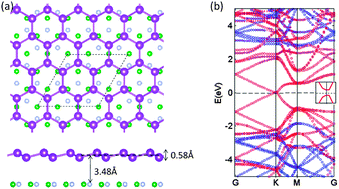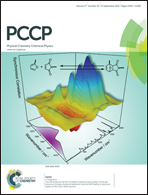Substrate effects on the monovacancies of silicene: studied from first principle methods
Abstract
The geometrical structures and electronic properties of defective silicene with monovacancies (MVs), placed on two different substrates, a h-BN sheet and an Ag(111) surface, have been investigated using the first-principles method. It is found that due to the weak van der Waals interaction from the h-BN sheet, there exists two kinds of MVs in the Si|h-BN composite, i.e., the self-healing MV-1 and MV-2 with a closed five- and nine-membered (5–9) pair of rings, with the former as the ground state MV, which is the same as in the case of the free-standing silicene with MVs. The electronic bands around the Fermi level of the Si|h-BN composite with the Si MVs are all induced by the Si atoms, leading to a nonmagnetically metallic ground state. But the Ag(111) substrate has a stronger coupling with the Si adlayer, leading to the existence of three kinds of inequivalent Si atoms, greatly changing the MV structures and the stability of the defective silicene adlayer, as well as its corresponding electronic structures. For example, the symmetric-like MVs are found to always be the stable MV structures in the Si|Ag(111) composite, no matter which type of inequivalent Si atom is removed from it. The Ag substrate has a dominant contribution to the electronic bands of the defective Si|Ag(111) composite with the Si MVs. Even so, some characteristic bands induced by the Si MV defects could still be found.


 Please wait while we load your content...
Please wait while we load your content...